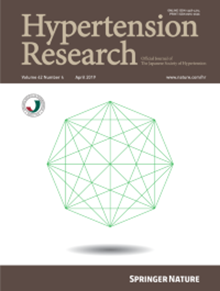APP拷贝数丢失导致胸主动脉夹层。
IF 4.6
2区 医学
Q1 PERIPHERAL VASCULAR DISEASE
引用次数: 0
摘要
胸主动脉夹层(TAD)是心血管性猝死的主要原因。尽管在小队列的遗传性TAD或散发性主动脉夹层患者中报道了有限数量的拷贝数变异(CNVs),但使用大规模全基因组测序(WGS)数据对散发性TAD中CNVs的全面调查和功能验证仍然缺乏。为了解决这一差距,我们在两个独立的病例对照研究中进行了全基因组测序,涉及257例散发性TAD患者和132例对照。我们通过基因敲除小鼠来探索靶基因在TAD体内进展中的作用。此外,我们还进行了RNA-seq分析和体外分子生物学实验来阐明其潜在的机制。在发现和验证队列中,我们确定了4个CNVs基因(DSCAM, APP, LINC00907, PROCR)可能在TAD的发病机制中起关键作用。其中,只有APP在TAD患者主动脉中的表达较对照组降低。在β-氨基丙腈(BAPN)诱导和PCSK9/ angii诱导的TAD模型中,APP的缺失加剧了弹性纤维的断裂,促进了TAD的形成。在体外,APP的缺失促进了血管平滑肌细胞(VSMCs)的凋亡和向分泌型表型的转变。我们的研究首次报道了TAD中APP的新CNVs,表明APP缺乏加速了TAD的发生和发展。这些发现表明,APP是一个有希望的治疗靶点,也是TAD的潜在遗传危险因素。本文章由计算机程序翻译,如有差异,请以英文原文为准。

Copy number loss Of APP cause thoracic aortic dissection
Thoracic aortic dissection (TAD) is a leading cause of sudden cardiovascular death. Although a limited number of copy number variations (CNVs) have been reported in small cohorts of patients with hereditary TAD or sporadic aortic dissection, a comprehensive investigation and functional validation of CNVs in sporadic TAD using large-scale whole genome sequencing (WGS) data remain lacking. To address this gap, we conducted whole genome sequencing in two independent case–control studies, involving 257 patients with sporadic TAD and 132 controls. We generated gene knockout mice to explore the role of the target gene in TAD progression in vivo. Additionally, RNA-seq analysis and molecular biology experiments were performed in vitro to elucidate the underlying mechanisms. In the discovery and validation cohorts, we identified four CNVs genes (DSCAM, APP, LINC00907, PROCR) potentially pivotal in the pathogenesis of TAD. Among these, only APP displayed reduced expression in the aortas of TAD patients compared to controls. Deletion of APP exacerbated elastic fiber fragmentation and promoted TAD formation in both β-aminopropionitrile (BAPN)-induced and PCSK9/AngII-induced TAD models. In vitro, the loss of APP facilitated vascular smooth muscle cells (VSMCs) apoptosis and the switch to a secretory phenotype. Our study is the first to report novel CNVs of APP in TAD, demonstrating that APP deficiency accelerates the initiation and progression of TAD. These findings suggest that APP represents a promising therapeutic target and a potential genetic risk factor for TAD.
求助全文
通过发布文献求助,成功后即可免费获取论文全文。
去求助
来源期刊

Hypertension Research
医学-外周血管病
CiteScore
7.40
自引率
16.70%
发文量
249
审稿时长
3-8 weeks
期刊介绍:
Hypertension Research is the official publication of the Japanese Society of Hypertension. The journal publishes papers reporting original clinical and experimental research that contribute to the advancement of knowledge in the field of hypertension and related cardiovascular diseases. The journal publishes Review Articles, Articles, Correspondence and Comments.
 求助内容:
求助内容: 应助结果提醒方式:
应助结果提醒方式:


